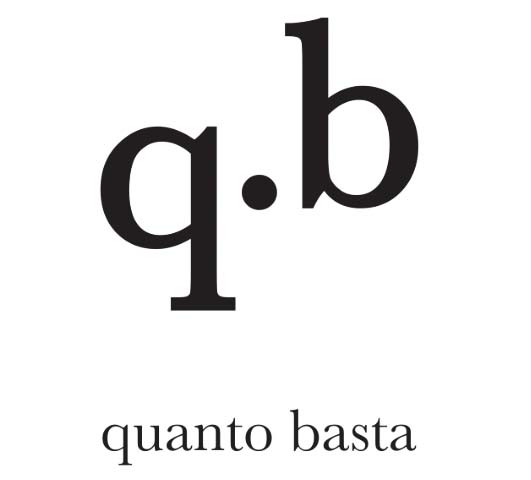
La parola italiana “Basta” deriva dal verbo intransitivo che significa: essere abbastanza, essere sufficiente.
The Italian word “Basta” comes from the intransitive verb which means: to be enough, to be sufficient.
“Questa pasta non basta per cinque persone.”
This pasta isn’t enough for five people.
“Basta! That’s enough!”
Stop it! That will do.
“Basta con queste scuse!”
Enough of these excuses.
“E come se non bastasse…”
And as if that wasn’t enough…
And then there is:
“Quanto basta”
As much as is necessary.
Nella cucina di qualsiasi cuoco in Italia, senterete spesso questa frase: “Quanto basta.” Ma, nelle ricette scritte, vedrai spesso solo le iniziali: Q.B.
In any cook’s kitchen in Italy, you will frequently hear this phrase — “Quanto basta.” But, in written recipes, often you will only see the initials: Q.B.
Per esempio / For instance: “aggiunge acqua QB.”
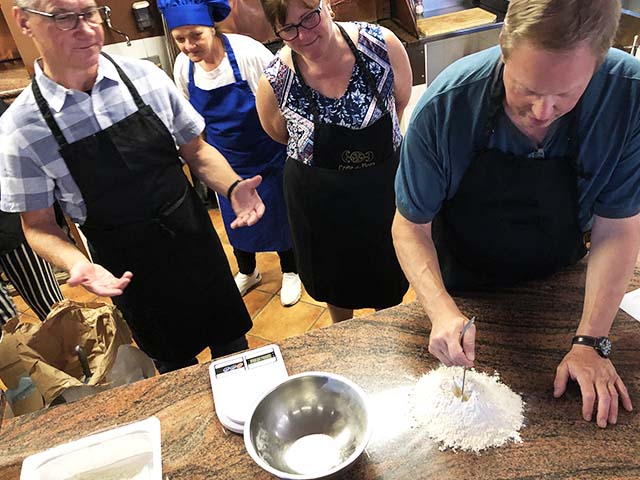
Proprio mentre si rimboccano le maniche per preparare un pasto durante una delle nostre lezioni di cucinare, questo strano “QB” confonde inevitabilmente gli studenti. Si fermano, alzano lo sguardo dalle loro ricette stampate e chiedono perplessi: “Q.B.? Che significa?”
Just as they are rolling up their sleeves to prepare a meal during one of our cooking sessions, this odd-looking “QB” inevitably confuses students. They stop, look up from their printed recipes and ask perplexedly, “Q.B.? What the heck does that mean?
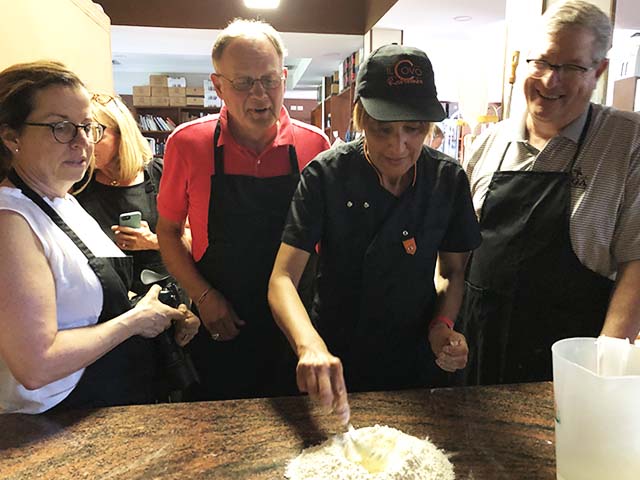
Se siete nella cucina di Claudia a Montpulciano, riderà deliziata e poi lei spiegherà rapidamente, Q.B. sta per Quanto Basta. Oppure, come diremmo in inglese, aggiungi quanto basta per ricorrere ai tuoi gusti personali.
If you are in Claudia’s kitchen in Montepulciano, she will laugh delightedly and then quickly explain, Q.B. stands for Quanto Basta. Or, as we would say in English – add just enough of whatever the recipe calls for to suit your personal taste.
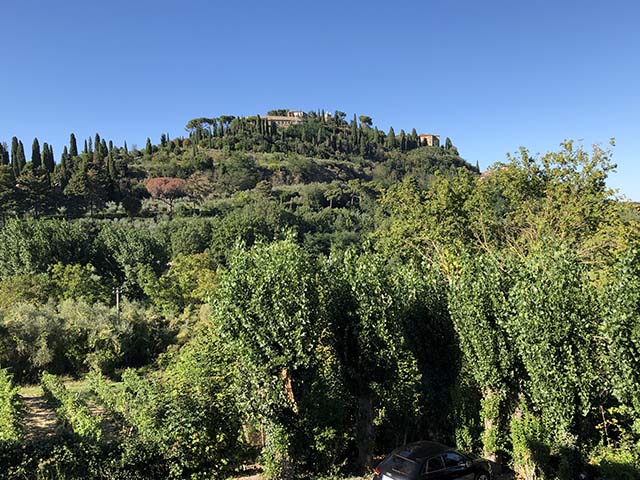
Lo scorso settembre, io con i miei gruppi, ci siamo trovati benissimo con Claudia nel suo ristorante Il Covo. Lì abbiamo preparato pici sulla base di un’antica ricetta di sua nonna. Abbiamo imparato a misura e aggiungere le giuste quantità di farina, acqua e uova…e sale (quanto basta) per ottenere la giusta consistenza dell’impasto.
Last September, my groups and I had a wonderful time with Claudia in her restaurant Il Covo. There we prepared pici pasta based on an age-old recipe of her grandmother’s. We learned how to measure and add just the right amounts of flour, water, and eggs… and salt (Quanto basta) to achieve the right consistency of dough.
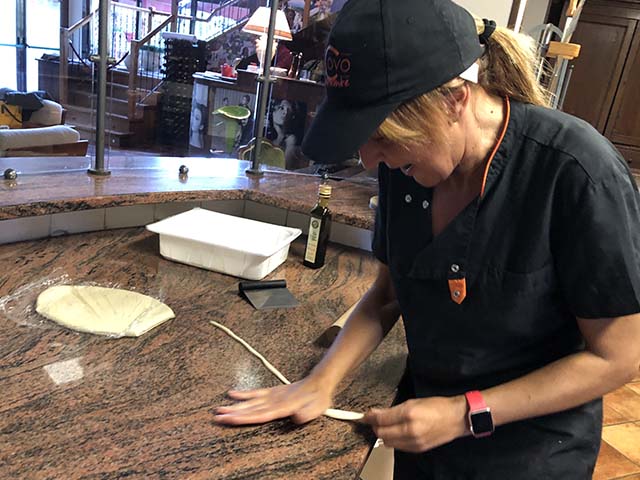
C’è un’altra frase italiana che mi piace da morire… è “ad occhio.” Allo stesso modo, “ad occhio” significa preparare qualcosa senza ricetta.
There is another Italian phrase that I love… it is “ad occhio.” In a similar vein, “ad occhio” means to prepare something without a recipe… simply “eyeballing” the ingredients.
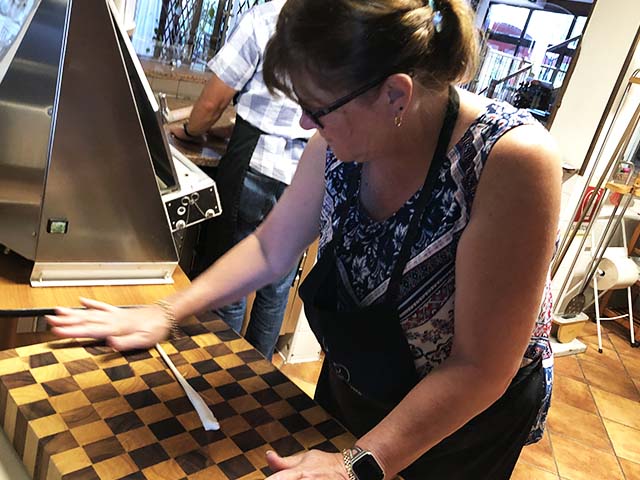
Torniamo nella cucina di Claudia… quando tutto sembrava corretto, ci ha mostrato come tagliare pezzi di pasta e stenderla con le dita e il palmo delle mani per creare lunghe e sottili “collane” di pasta. Più tardi, dopo aver preparato una salsa aromatica, avremmo fatto bollire la pasta che avevamo preparato per finire il primo piatto del nostro pasto preparato con Claudia.
Back in Claudia’s kitchen, when all was looking and feeling correct, she then showed us how to cut off chunks of pasta dough and roll it out with our fingers and palms of our hands to create long thin “necklaces” of pasta. Later, after preparing a savory sauce, we would then boil the pasta we had made to finish off the first course of our meal prepared with Claudia.
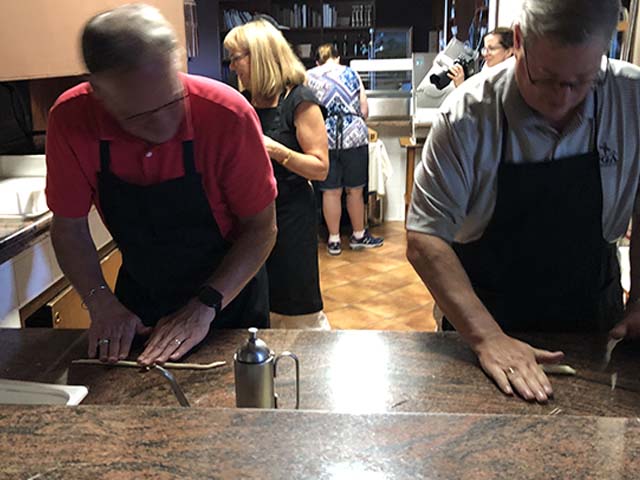
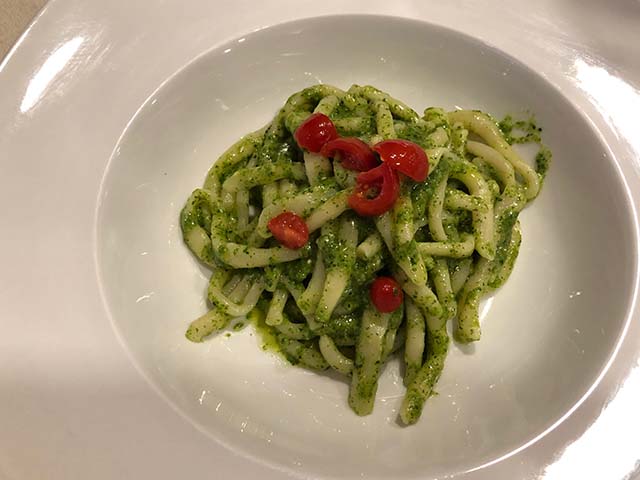
È bello trascorrere del tempo con Claudia e imparare la cucina tradizionale italiana, oltre ad alcuni segreti che le hanno insegnata sua nonna. Mi dice spesso che è stata praticamente cresciuta nella cucina di sua nonna e preparare piatti appetitosi è la sua passione!
It is lovely to spend time with Claudia and learn traditional Italian cooking, as well as a few secrets taught to her by her grandmother. She often tells me she was practically raised in her grandmother’s kitchen, and preparing mouth-watering dishes is her passion!
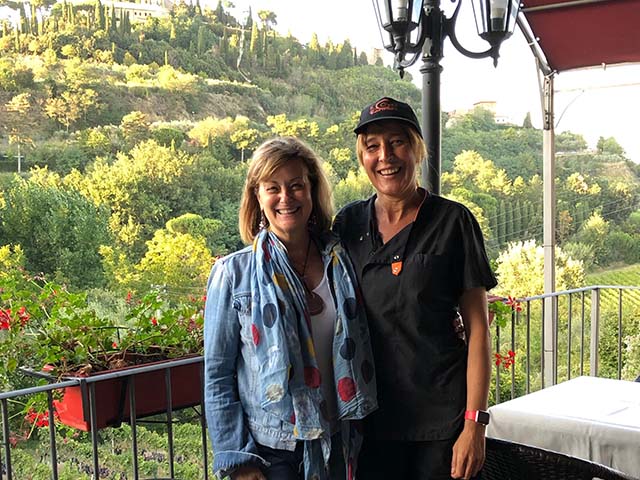
Sono contenta che Claudia ed io tra poco inizieremo a collaborare non solo a Montepulciano, ma anche qui sul blog. È entusiasta di condividere alcuni video di cucina e insieme speriamo non solo di divertirvi e aiutarvi ad imparare un po’ di italiano… ma anche darvi l’incentivo (quanto basta) per iniziare a fare da zero la vostra pasta e deliziosi piatti italiani!
I’m pleased that Claudia and I will soon begin collaborating not just in Montepulciano but here on the blog as well. She is excited to share some cooking videos, and together we hope not only to entertain you and help you learn some more Italian… but also give you just enough (Quanto Basta) incentive to start making your own pasta and delicious Italian meals from scratch!
Ricordatevi! Chi mangia bene, vive bene!
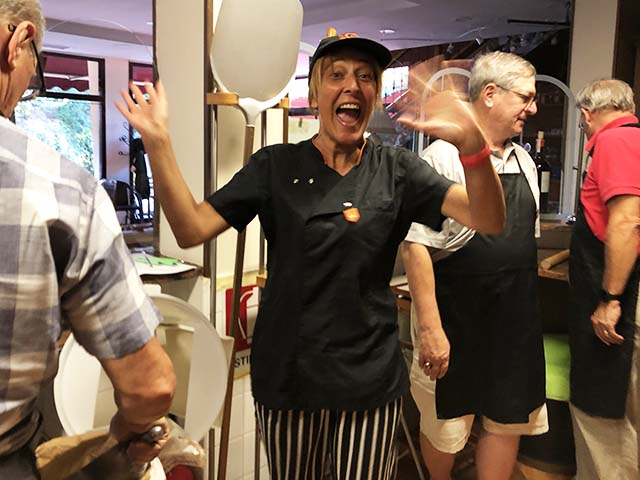

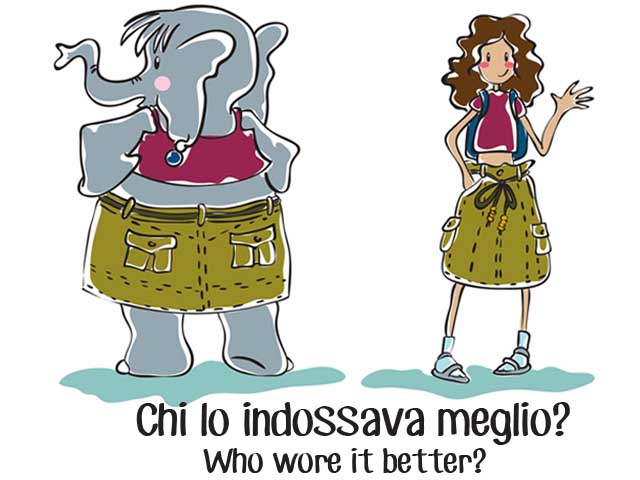


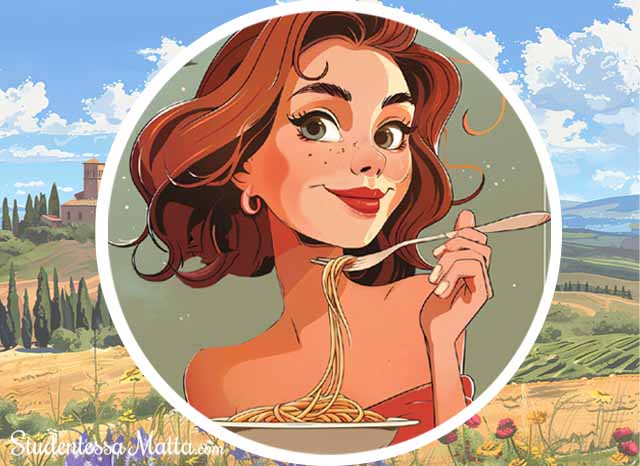
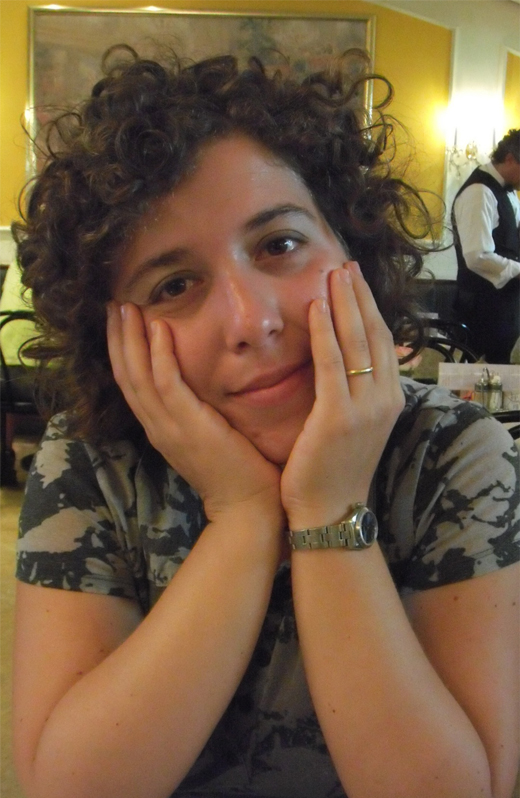






Fantastic post. È così abbastanza.
You will be missed in the Bay Area good luck in Austin. Keep the blog coming.
Non vedo l’ora!
San Franciso: Bastava.
Austin? E troppo! Tutto lo stesso, buon pasto.